How to Max Out Your 401(k) in 2023

Pensions are a retirement income vehicle that is slowly becoming as extinct as dinosaurs. Some may view the loss of these defined-benefit retirement plans as a negative thing. On the other hand, you can focus on your ability to control your own destiny. 401(k) plans are an employer’s way of putting you at the helm of directing your retirement savings plan. The question is how to best utilize your 401(k) and what it means to “max out” your 401(k).
What does it mean to “max out” your 401(k)?
Let’s start off by clearing up a common misconception that many savers have. “Maxing out” your 401(k) does not mean contributing the maximum amount required to receive the full company match. For example, a common plan might be set up to match 100% of the first 4% of employee contributions and then 50% of the next 2%. This equates to a 5% (4% + 50% of 2%) company match on an employee’s 6% contribution. If your salary is $100,000, a 6% employee contribution is $6,000. The 2023 IRS limit for employee contributions is $22,500. If you’re 50 years old or older, you can also contribute an additional $7,500 for a total of $30,000. Although the company matches $5,000 of your $6,000, you are still short of the $22,500 (or $30,000) that would max out your contribution. Note that employer contributions are not included in the annual contribution limit.
Regular 401(k) or Roth 401(k)?
If you are early in your career or think that your tax bracket will be higher in retirement, it might make sense to contribute to the Roth 401(k) portion of your plan. Most 401(k)s now offer the employee the ability to contribute to the traditional pre-tax 401(k) or a Roth 401(k). Depending on when you want the tax deduction, directs which way you should send your contributions. If you are willing to pay tax on the contributions now, let them grow tax-free. Then take them out tax-free in retirement, use the Roth 401(k) option. If you are a high earner and need to lower your taxable income now, direct your contributions to the pre-tax option. Those pre-tax contributions grow tax-deferred and will be taxed as ordinary income at retirement. Some savers like to mix it up and contribute 50% to the Roth 401(k) and 50% to the pre-tax 401(k). Note that any employer match is made on the pre-tax side regardless of which type of contribution the employee made.
Employer Match
Another tip is to spread out your contributions over the year, so that you don’t leave any employer match on the table. If you front-load your employee contributions early in the year, you might forgo employer matching contributions that are calculated and provided each pay period. If your employer matches only up to a certain percentage and you are contributing more than that, you might lose out on matches later in the year once you hit your employee maximum. Some employers now offer a make-up contribution to offset this front-loading issue so it becomes a non-event. However, you should check with your plan to see if it does offer the make-up contribution or you will need to smooth out your contributions over the year.
Do Not Overlook the Investment Allocation Part
While you are maxing out your 401(k) contributions, or at least contributing the most you can manage, make sure to pay attention to the investment allocation of your portfolio. These funds need to grow over many decades, so take enough risk to make that happen. Keep in mind the management expenses of each of the funds in which you invested in and try to pick low-cost index funds. It might not seem like a big difference when you’re comparing fractions of a percent. However, the compounding of high fees will eat into your investment returns over time.
Pay Increase Should Mean 401(k) Contribution Increase
If you aren’t able to max out your contributions right now, check to see if your 401(k) plan offers an option that will automatically increase your contribution percentage annually or at another time period. This helps to automate the process and nudges you to do the right thing. When you receive a salary increase always increase the 401(k) contribution percentage and it will be a painless event to your net paycheck. The sooner you can ramp up to the maximum annual 401(k) contribution limit, the better. Your future self will thank you for your current discipline.
Have more questions? Contact Us
Missie Beach, CFP®, CDFA®
Senior Financial Advisor
Share This Story, Choose Your Platform!
Wiser Wealth Management, Inc (“Wiser Wealth”) is a registered investment adviser with the U.S. Securities and Exchange Commission (SEC). As a registered investment adviser, Wiser Wealth and its employees are subject to various rules, filings, and requirements. You can visit the SEC’s website here to obtain further information on our firm or investment adviser’s registration.
Wiser Wealth’s website provides general information regarding our business along with access to additional investment related information, various financial calculators, and external / third party links. Material presented on this website is believed to be from reliable sources and is meant for informational purposes only. Wiser Wealth does not endorse or accept responsibility for the content of any third-party website and is not affiliated with any third-party website or social media page. Wiser Wealth does not expressly or implicitly adopt or endorse any of the expressions, opinions or content posted by third party websites or on social media pages. While Wiser Wealth uses reasonable efforts to obtain information from sources it believes to be reliable, we make no representation that the information or opinions contained in our publications are accurate, reliable, or complete.
To the extent that you utilize any financial calculators or links in our website, you acknowledge and understand that the information provided to you should not be construed as personal investment advice from Wiser Wealth or any of its investment professionals. Advice provided by Wiser Wealth is given only within the context of our contractual agreement with the client. Wiser Wealth does not offer legal, accounting or tax advice. Consult your own attorney, accountant, and other professionals for these services.





